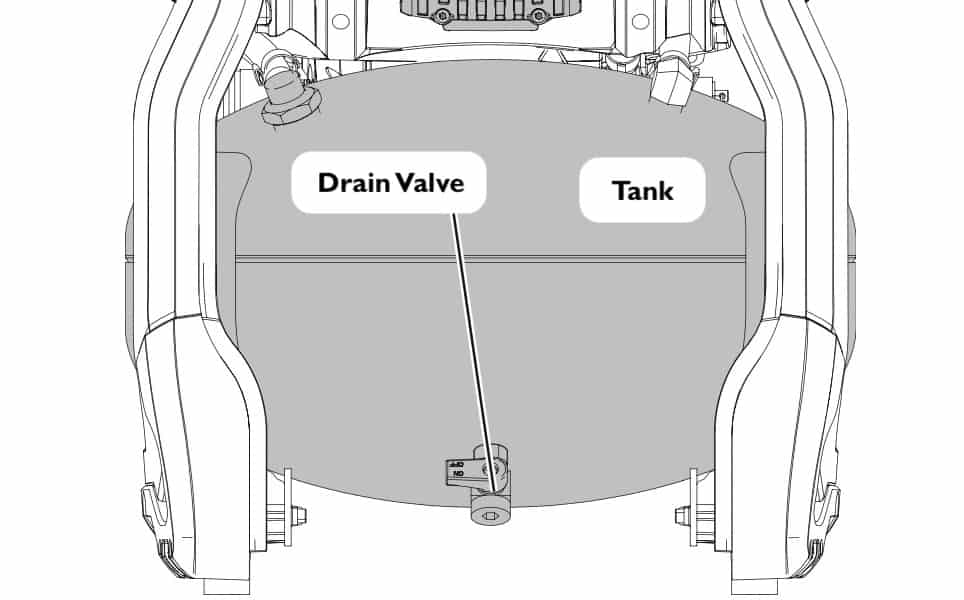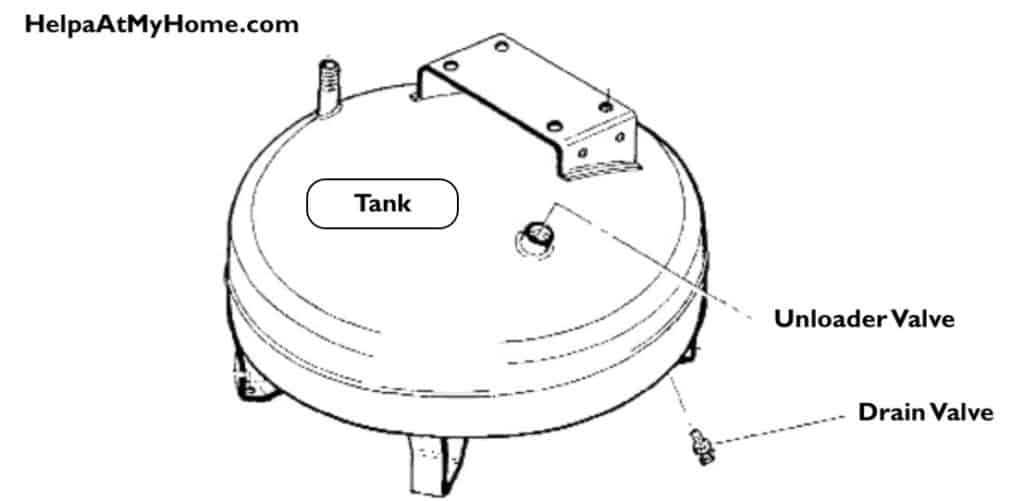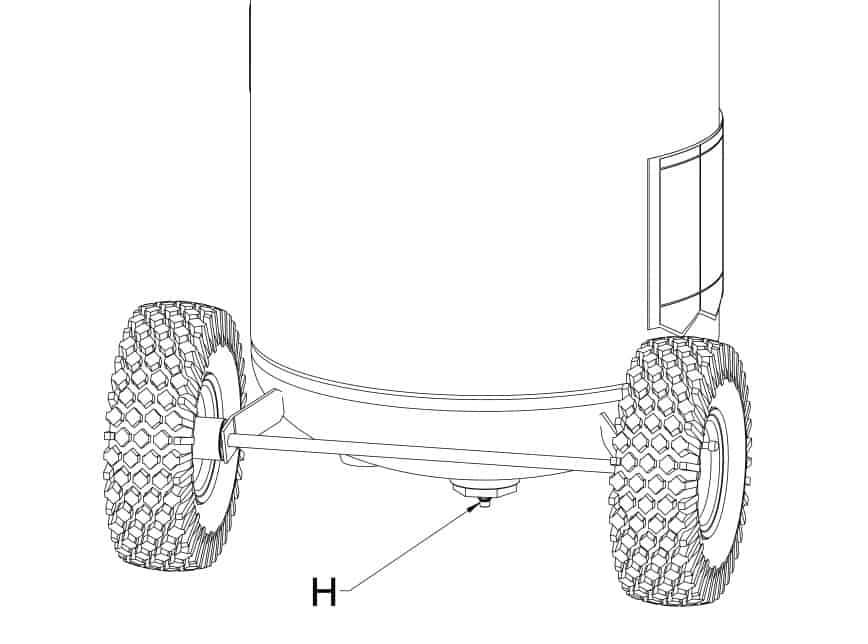Your home air compressor — no matter how big or how small, how old or how new — has some form of drain valve. This is an important and very much misunderstand part of this tool. Here’s we’ll discuss what a drain valve is and how to use it.

What Is The Valve On The Bottom Of An Air Compressor?
That little exit valve on the bottom of an air compressor is known as a drain valve. As you might expect it’s designed to drain stuff from the air compressor’s tank. What surprises many people is what you drain from the valve: water.
Air compressors are basically motors that pump air into a tank where the air accumulates and gains pressure. The air is then let out through a tool which puts it to use. When air is taken from your surroundings (known as “atmospheric air”) it contains water vapor. When the air is put at high pressure the vapor will collect and fall out of the air, forming water droplets that pool at the bottom of your air compressor’s tank.
A surprising about of air can collect and sit at the bottom of your tank. Regardless of what material the tank is made out of, this isn’t a formula for success. In fact that water can lead to rust and degradation of the tank And the manufacturer’s make this really clear. Here is what Bostitch has to say:
“Failure to drain moisture from the tanks properly could lead to the formation of rust and thinning of the steel tank.”
Most manufacturers recommend draining the water from the tank daily. For typical home owners who use their compressor for a single task and then put it away, this will mean draining the tank after every use.
To put it simply, draining an air compressor is a mandatory maintenance activity. The good news is that it’s easy and quick to do.

Which Valve Is The Drain Valve?
First things first, let’s find the drain valve. The best way to do this will be to locate your tool’s instruction manual which will have a parts diagram that will clearly label all the working parts.
The drain valve will always be on the bottom of of the air tank. That is, at the bottom of the largest part of the air compressor, if it’s not clear which part the tank is.
The drain valve can come in many shapes and forms. Sometimes it will be a little bolt head, sometimes it will be an actual valve that you turn similar to on a water jug. This will vary depending on the brand and size of the compressor.
Long story short, the drain valve will be on the bottom of the tank and pointing downwards so gravity will force the water out (as opposed to air pressure).
How To Drain An Air Compressor
These will be general directions on using an air compressor. You should always refer to your tool’s manual on how to properly use and maintain your tools.
- Turn off the compressor and remove any connected tool
- Reduce the pressure to a low as possible. It should always be under 10 psi before attempting to use the drain valve. You can let off pressure usually by pulling a ring on the safety valve at the top of the tank or by using a high flow tool, like an air blow gun. Wait until the air tank pressure gauge (make sure you are reading the correct gauge!) is close to zero
- Place a collection bucket or drip pan under the valve. This will collect the water.
- Open the drain valve. This might mean unscrewing something or it turning a handle
- Once the water is flowing out, carefully tilt the air compressor so the drain valve is facing straight down. This might not be necessary on all compressors.
- When the liquid stops flowing, close the valve

And that’s it! Your air compressor is drained and ready for another day’s work.
Now Read: The 3 Best Air Compressors For Your Garage
FAQs
Should I release the pressure from an air compressor when I’m done using it?
Yes. When you are finished using your air compressor for the day it is important to release all the pressure from the tank and then drain the water from the tank. You cannot drain the water without getting the tank pressure to near zero psi.
Should I have some air pressure in the tank to help draining it?
No. You should release as much air pressure as possible before you drain water from it. The air pressure (psi) will not help force the water out, because the tanks are design for gravity to force the water out. Having pressure in the tank when draining it is a safety hazard and will lead to water spraying out when the valve is opened. Never open a drain valve unless all pressure is removed from the tank
How often should I drain my air compressor?
An air compressor should be drained daily.
